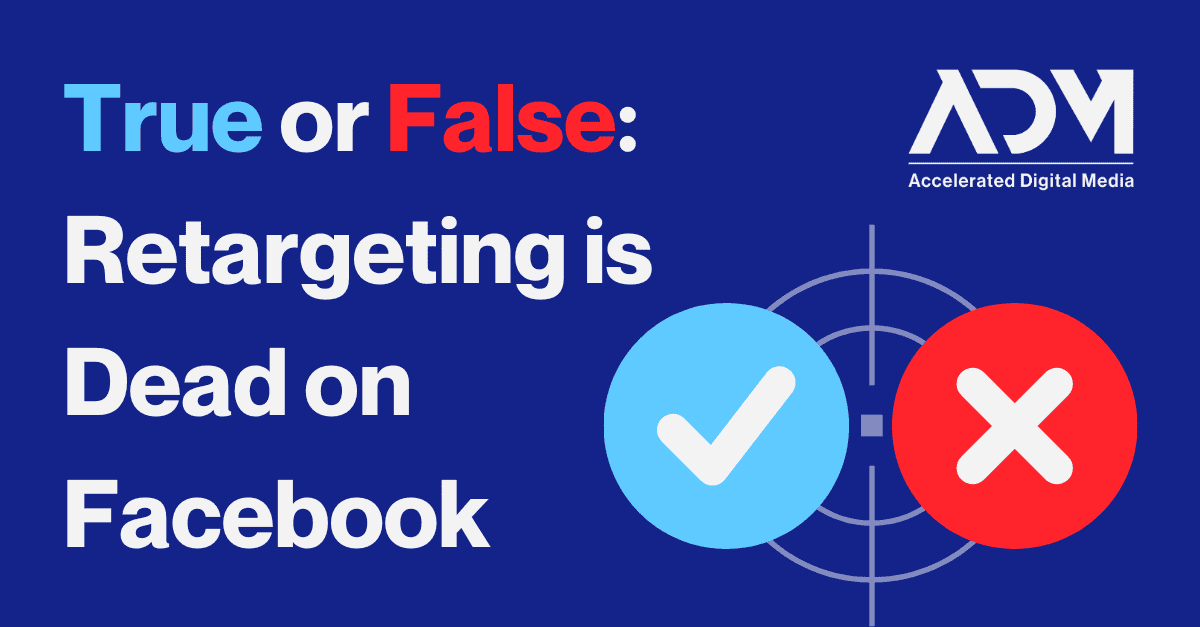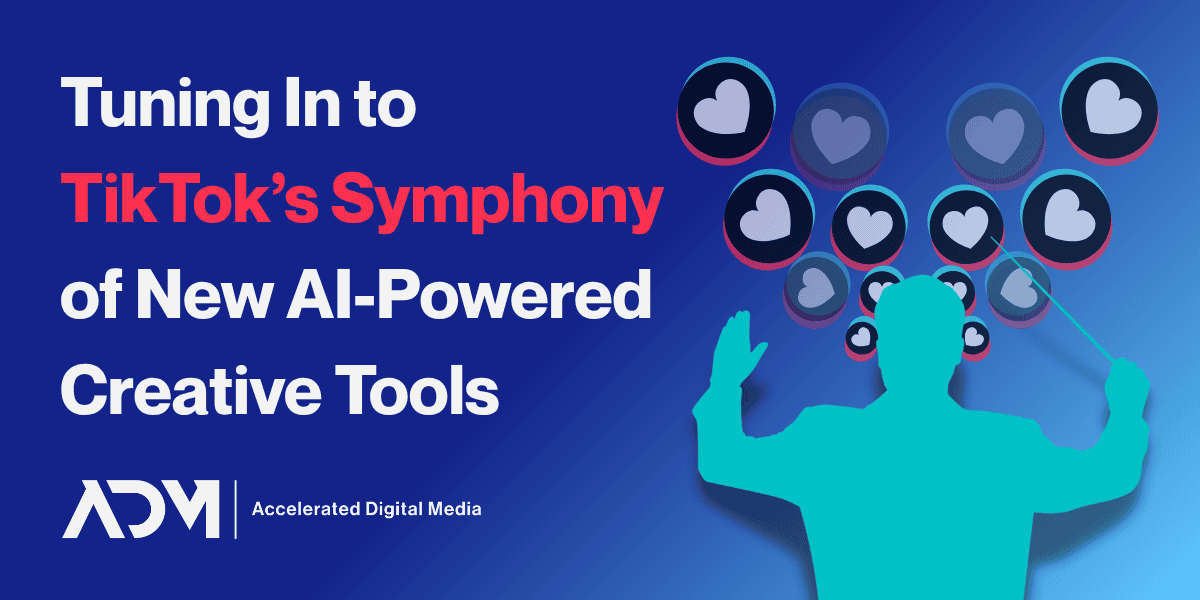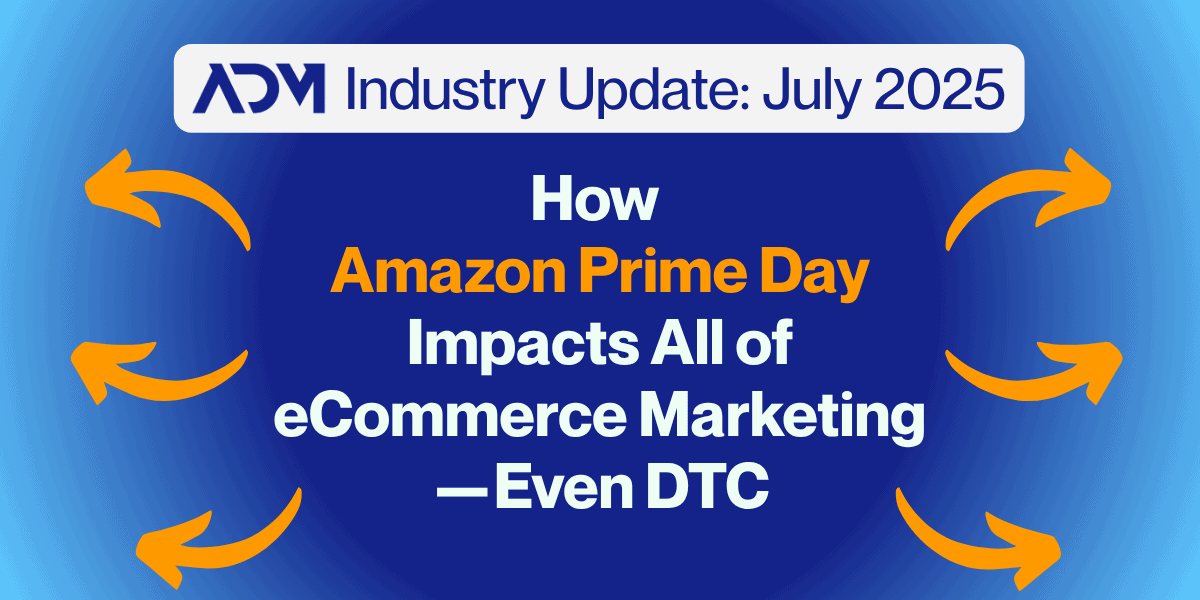- Retargeting was once a major part of Facebook’s advertising potential and effectiveness, but in social media circles, it’s common now to hear people claim that “retargeting is dead” on Facebook. So…is it?
- Facebook’s ability to retarget has been compromised by privacy updates like iOS 14, requiring users to opt into data tracking, thus limiting advertisers’ targeting capabilities.
- While you can still technically retarget users on Facebook, the traditional methods have lost so much efficacy that advertisers can’t bank on it to drive results any longer.
- The landscape of Facebook advertising has shifted and advertisers need to shift their mindset on how to approach it—but tools like Advantage+ are rapidly restoring its marketing potential
Social media is full of hyperbolic claims—and marketing isn’t immune to them, either. So it’s become something of a refrain lately in social media marketing circles that “retargeting is dead” on Facebook. Is that rooted in truth, or is it just another over-the-top online declaration? In this blog, we’ll address what people mean when they claim that, why they claim it, and explain (from ADM’s perspective) whether or not it’s actually true.
Why Do People Say that Retargeting is Dead on Facebook?
When you hear social advertising influencers and experts proclaim that retargeting is dead on Facebook, they aren’t being completely literal. There are still functions that allow you to direct your ads to users who have interacted with your brand in some way previously—so in the technical sense, you can still retarget. Meta’s impressive Advantage+ campaigns do include retargeting, but don’t give users the option to run standalone campaigns aimed only at previous customers or interactors.
So when people say that retargeting is dead, they primarily mean that the old ways that advertisers used to leverage Facebook retargeting are not nearly as effective as they once were. But is it bad enough to say that it’s dead? Well, let’s compare it to how things used to work.
How Did Brands Use Facebook Retargeting Before?
Once upon a time, retargeting was a primary focus in Facebook advertising—one of the main advantages of advertising on the platform was how it helped brands close the loop between their website and social media. Using the Facebook pixel on your site, you’d be able to precisely retarget Facebook users based on the actions they’d taken, from time spent on page to cart abandoners to purchasers. This could work across devices, so users who had visited your site on their mobile web browser could be reached on social media when they were using the Facebook or Instagram app.
With the wide reach of Facebook and Instagram, many brands built segmented standalone campaigns to target all of those different prospects with specific creative that reflected where they were in the sales funnel. Overall, it was a very effective way to use Facebook Ads and many companies became reliant on it.
How and When Did Facebook Retargeting Change?
The big thing that changed Facebook marketing was the much-discussed iOS 14 update that Apple pushed through in 2020. This update had far-reaching effects for digital marketing, most notably with how Apple devices regulated app tracking. iOS devices now require users to opt in to data tracking through downloaded apps, rather than opt-out. Predictably, a vast majority of people opted out.
Across social advertising, this was a landmark event that fundamentally changed how advertisers and performance marketing agencies operate. With Apple controlling so much mobile market share (almost 60% in the US at the time of the update) this change essentially cut Facebook’s advertising capabilities significantly towards the majority of smartphone users. As a result, retargeting became an extreme uphill battle on Facebook and Instagram—hence why the “retargeting is dead on Facebook” mantra began to emerge.
Advertisers can no longer build highly-specific retargeting campaigns on Facebook. For instance, you can’t ensure that only people who have abandoned their cart see the ad that says “Hi, we see you left something in your cart!” because now the list your Facebook pixel can assemble will only be a fraction of relevant users. As we get closer to a cookieless future, this will become even more pronounced.
So…IS Retargeting Actually Dead on Facebook?
In a very technical sense, no. Facebook still allows brands to target “engaged shoppers,” and you could still create a standalone retargeting campaign if you wanted to—it just wouldn’t be very effective (if it could even assemble a large enough audience to run at all). If brands still have legacy retargeting campaigns in place that are delivering results, there’s no reason to turn them off. Plus, as we’ll discuss in the next section, elements of retargeting have been incorporated into Meta’s exciting and effective Advantage+ campaigns.
But from our performance marketing agency’s perspective? Yes: Facebook retargeting as we all once knew it is, indeed, dead. Segmented remarketing campaigns once contributed to the “golden era” of Facebook Ads, but today they are no longer an effective core strategy for most businesses. In their place, brands need to look at different ways to leverage Facebook and Instagram.
What Can Facebook Advertisers Do Instead of Retargeting
Social media advertisers had to adjust significantly following the iOS update, but fortunately enough time has passed that new techniques—and features from the advertising giant itself—have helped restore much of the platform’s marketing potential.
The main theme on Facebook these days is creative-driven, blended-audience advertising. That’s driven by Advantage+ campaigns, which utilize advanced machine learning to identify users who are most likely to convert. These campaigns take away a lot of the manual control that used to be a part of audience targeting, placing additional emphasis on the creative used to draw in the right audience.
These campaigns target through inference and learn based on how users interact with the ads. Because that means they’ll include both cold and warm audiences, they’re better to think of as blended audience approaches. That means your creative should be doing the heavy lifting: The right creative will cause users to pause, click, and—when done successfully—buy. That will inform the algorithms and allow Advantage+ to optimize for better results over time.
Advantage+ is an important element of our most important recommendation, which is that it’s best to embrace a broad approach. Brands should cast a wider net at the ad set level and be narrow in the language you use to target individuals at the ad level. Ads should speak to the person you want to reach, rather than the step in the funnel they are in. We’ve written a lot on this topic in the past, so be sure to read more on how you can build more engaging Facebook and Instagram ad creative and let that creative find your audience.
While advertising on Facebook isn’t what it was before the iOS 14 update, it also isn’t what it was before Advantage+. Whenever one technique loses favor, another usually springs up to close the gaps left behind. At ADM, we always stay on top of the latest changes in social media marketing, and we keep our clients ahead of the curve. If you’re looking for a forward-thinking, adaptive performance marketing agency, don’t hesitate to reach out to our team today.




